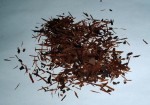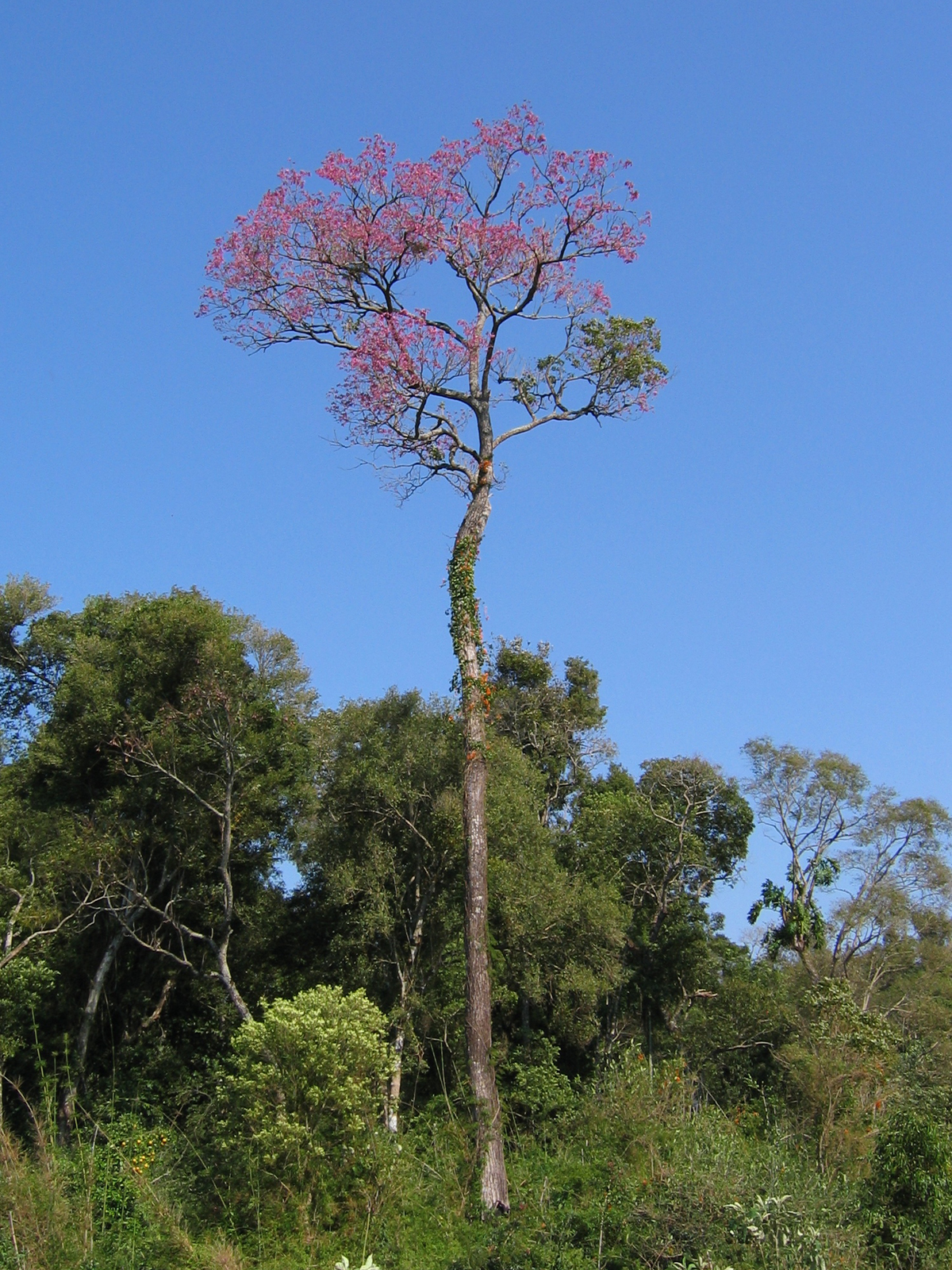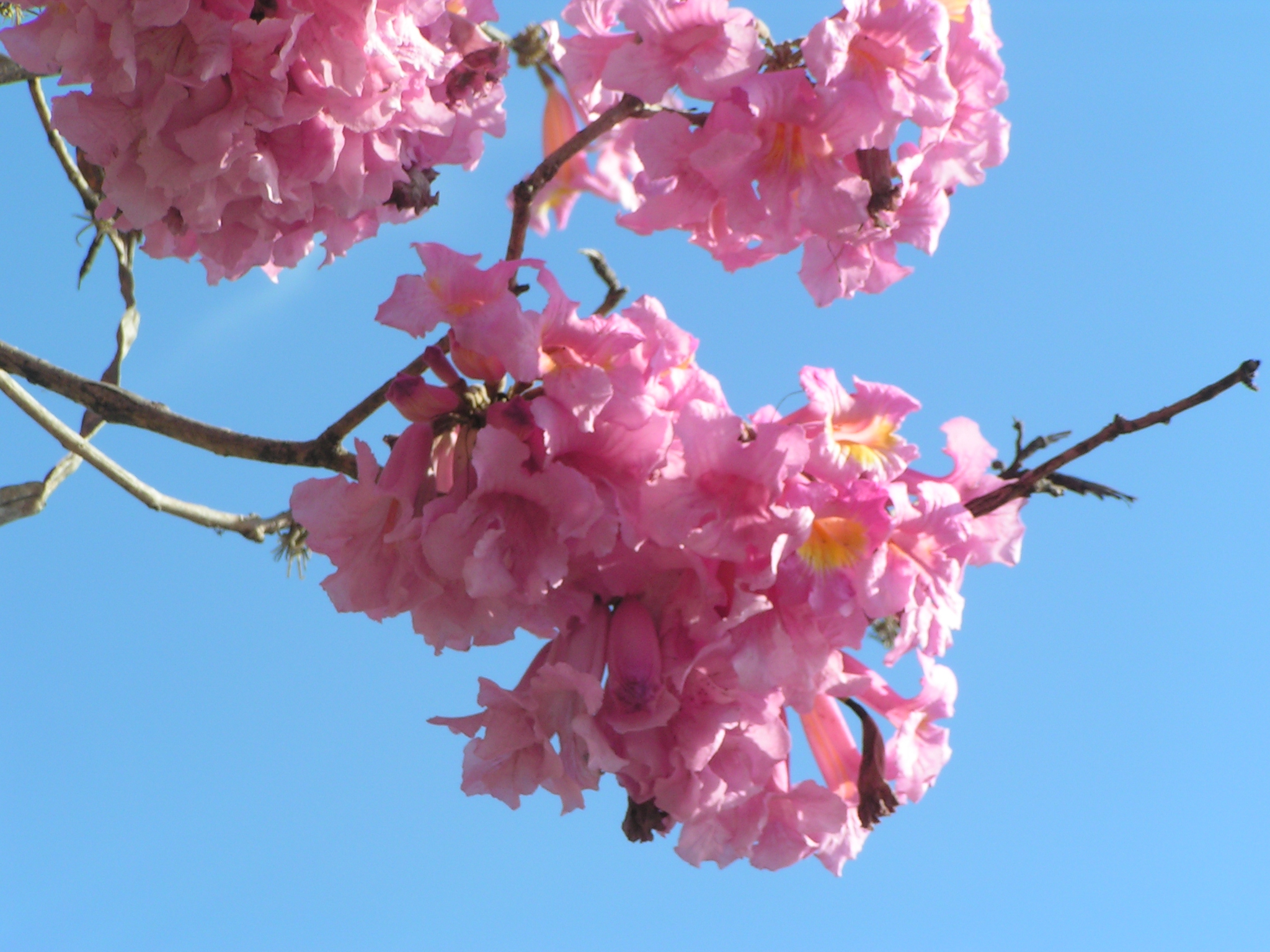Stay Informed
Popular Articles
- Hiatal Hernia: Hidden Cause of Chronic Illness
- Small Intestinal Bacterial Overgrowth (SIBO)
- Applied Lymphology: Unlocking the Secret to Pain Relief
- An Introduction to Constitutional Iridology
- The Low Down on Liver Detoxification
- An Energetic and Emotional Approach to Cancer
- Fat Facts
- Marrow in the Bones
- Blood Type and Nutrition
- Cardiac Herbs: Beyond Hawthorn
Quick Search
The School of Modern Herbal Medicine




Pau D'Arco
- 6/19/2013
- Categorized in: Herbs & Herbalism

Latin Name: Tabebuia impetiguniosa DC, T. avellanedae
Other Names: Trumpet Tree, Lapacho, taheebo, Quebracho, Ipê roxo, poui
Parts Used: Bark, wood
Description & Habitat: Pau D’Arco is a large South American timber tree with extremely hard wood and spectacular tubular flowers of red, violet, pink, and yellow. The bark and wood are used to make medicine, although the yellow-flowered species are considered inferior for this purpose. All species are highly resistant to rot and insect/fungal attack. Pau D’Arco has been used medicinally for at least 1,000 years by Brazilian Indians, gradually spreading to other South American Indians. It was not used in international commerce until the mid-20th century.
Constituents: Contains naphthaquinones (heartwood is richer than bark), Lapachol and Beta-Lapachone (antimicrobial, antitumor, antimalarial, antifungal, antiviral, anticoagulant), xyloidone, deoxylapachol, anthroquinone (activity against H. pylori), furonaphthoquinones, phenolic acids, tannins, coumarins, flavanoids, saponins, indoles, and the alkaloid tecomine. The most well-researched of the napthaquinones is lapachol, which in isolated form is an immune stimulate in low doses and cytotoxic in larger doses. It is also anti-inflammatory, analgesic and has some antifungal activity against Candida albicans.
 Historical Uses
Historical Uses
Pau D’Arco has been traditionally used to treat bacterial, viral and fungal infections, digestive tract disorders (dysentery, gastric ulcers), skin diseases (fungal, eczema, psoriasis), fevers, malaria, and inflammatory conditions. It was introduced into Western medicine in 1960, where it was used as a remedy for cancer.
Modern Uses
Pau D’Arco is currently used to treat a wide range of infections, including viral infections like the common cold, flu, H1N1, bronchitis, asthma, gonorrhea, syphilis, and prostate and bladder infections. It is a popular herbal remedy for fungal infections such as yeast infections or candida, but it may be overrated for this purpose. Some people get good results with it, others do not. It is best suited for infections accompanied by inflammation in the upper respiratory passages, gastrointestinal tract and genitourinary tract. It is also used to treat gastritis, diarrhea, joint pain, boils, wounds, cystitis, urethritis, fever, H. pylori infections (in combination with other remedies), and anemia. The herb can be applied directly to the skin for Candida yeast infections.
Preparation: Works well as a decoction. Use 3-4 teaspoons of the herb in a quart of water and simmer for 15 minutes. Can also be prepared as a tincture or glycerite. Alcohol is a better solvent for naphthaquinones than water. Also available in capsule form.
Dosage: Drink up to a quart of the decoction per day. In tincture form take 30-60 drops up to four times a day. In glycerite form, take 1/2-1 teaspoon up to four times a day. For capules, take 2-4 capsules 2-3 times daily. Decotion and tinctures may also be applied topically for skin infections, eczema or wounds. Use as a vaginal wash (douche) or sitz bath for vaginitis or vaginal yeast infections.
Warnings: High doses may cause nausea, vomiting and intestinal discomfort. It can be an anticoagulant in high doses, so avoid use with blood thinners. Also use cautiously during pregnancy.
Selected References
- Herbal Therapy and Supplements by Merrily A. Kuhn and David Winston
- Botanical Safety Handbook by Michael McGuffin, Christopher Hobbs, Roy Upton and Alicia Goldberg
- PDR for Herbal Medicines by Medical Economics Press
- Encyclopedia of Medicinal Plants by Andrew Chevallier
